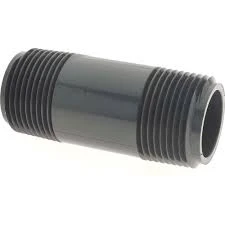-
Cangzhou Yulong Steel Co., Ltd.
-
Phone:
+86 13303177267 -
Email:
admin@ylsteelfittings.com
- English
- Arabic
- Italian
- Spanish
- Portuguese
- German
- kazakh
- Persian
- Greek
- French
- Russian
- Polish
- Thai
- Indonesian
- Vietnamese
- Zulu
- Korean
- Uzbek
- Hindi
- Serbian
- Malay
- Ukrainian
- Gujarati
- Haitian Creole
- hausa
- hawaiian
- Hebrew
- Miao
- Hungarian
- Icelandic
- igbo
- irish
- Japanese
- Javanese
- Kannada
- Khmer
- Rwandese
- Afrikaans
- Albanian
- Amharic
- Armenian
- Azerbaijani
- Basque
- Belarusian
- Bengali
- Bosnian
- Bulgarian
- Catalan
- Cebuano
- China
- China (Taiwan)
- Corsican
- Croatian
- Czech
- Danish
- Esperanto
- Estonian
- Finnish
- Frisian
- Galician
- Georgian
- Kurdish
- Kyrgyz
- Lao
- Latin
- Latvian
- Lithuanian
- Luxembourgish
- Macedonian
- Malgashi
- Malayalam
- Maltese
- Maori
- Marathi
- Mongolian
- Myanmar
- Nepali
- Norwegian
- Norwegian
- Occitan
- Pashto
- Dutch
- Punjabi
- Romanian
- Samoan
- Scottish Gaelic
- Sesotho
- Shona
- Sindhi
- Sinhala
- Slovak
- Slovenian
- Somali
- Sundanese
- Swahili
- Swedish
- Tagalog
- Tajik
- Tamil
- Tatar
- Telugu
- Turkish
- Turkmen
- Urdu
- Uighur
- Welsh
- Bantu
- Yiddish
- Yoruba

Dec . 14, 2024 16:00 Back to list
butt weld bends
Understanding Butt Weld Bends The Essentials
Butt weld bends are essential components in various sectors such as construction, plumbing, and manufacturing. These bends allow for the change of direction in piping systems, enabling fluid flow and structural integrity. Understanding the mechanics, applications, and significance of butt weld bends can provide a clearer insight into their role in modern engineering.
What Are Butt Weld Bends?
Butt weld bends are formed by welding two sections of piping at their ends to create a change in direction, typically in a 90, 180, or other specified angles. The welding process involves aligning the pipes end-to-end and applying heat to fuse them together, resulting in a strong and durable joint. This method is preferred in many industrial applications due to its ability to withstand high pressures and temperatures, making it suitable for transporting various substances such as water, oil, and gas.
Advantages of Butt Weld Bends
1. Strength and Durability Butt welds generally possess high tensile strength compared to other types of joints, such as threaded or flanged joints. The continuous weld provides a homogenous transition in the material, which helps in distributing stress evenly along the pipe.
2. Seamless Flow The internal surface of a butt-welded pipe is smooth without obstructions from fittings or joints, which minimizes turbulence and pressure loss. This feature is especially important in fluid dynamics and ensures efficient flow through the system.
3. Versatility Butt weld bends can be manufactured in various materials including stainless steel, carbon steel, and plastic. This versatility allows them to be tailored for specific applications, whether in chemical engineering, oil and gas industries, or construction.
4. Space Efficiency Compared to other fittings, butt welds are more compact and occupy less space. This is beneficial in tight installations where space is a premium.
Applications of Butt Weld Bends
butt weld bends

Butt weld bends are widely used across numerous industries. In the oil and gas sector, they facilitate pipeline construction by allowing for efficient routing of pipes. In chemical processing plants, they help in directing the flow of corrosive substances. Furthermore, in HVAC systems, butt weld bends ensure proper airflow through ducts and piping, enhancing the overall efficiency of the system.
Choosing the Right Type of Butt Weld Bend
When selecting the appropriate butt weld bend, several factors must be considered
1. Material Compatibility The materials of the pipe and bend must be compatible, particularly in terms of thermal expansion and resistance to corrosion.
2. Pipe Size and Schedule The diameter and wall thickness of the pipe (known as the schedule) directly influence the type of bend suitable for a project. The correct sizing ensures that the flow capacity is not hindered.
3. Angle of Bend Different applications may require different angles of bend (e.g., 45°, 90°, or 180°). The chosen angle will affect the flow characteristics and the ease of installation.
4. Welding Technique The welding process itself can vary; techniques such as TIG (Tungsten Inert Gas) or MIG (Metal Inert Gas) may be selected based on the materials' thickness and type. Proper welding ensures integrity and performance.
Conclusion
In summary, butt weld bends are fundamental in the construction and maintenance of piping systems across a range of industries. Their advantages—strength, seamless flow, versatility, and space efficiency—make them indispensable in applications requiring reliability and durability. When selecting a butt weld bend, considerations such as material, size, angle, and welding technique must be made to ensure optimal performance. As industries continue to evolve, the role of butt weld bends will likely expand, reflecting the need for robust piping solutions in modern engineering. Understanding their characteristics and applications can aid professionals in making informed decisions that contribute to successful project outcomes.
Latest news
-
ANSI 150P SS304 SO FLANGE
NewsFeb.14,2025
-
ASTM A333GR6 STEEL PIPE
NewsJan.20,2025
-
ANSI B16.5 WELDING NECK FLANGE
NewsJan.15,2026
-
ANSI B16.5 SLIP-ON FLANGE
NewsApr.19,2024
-
SABS 1123 FLANGE
NewsJan.15,2025
-
DIN86044 PLATE FLANGE
NewsApr.19,2024
-
DIN2527 BLIND FLANGE
NewsApr.12,2024
-
JIS B2311 Butt-Welding Fittings LR/SR 45°/90° /180°Seamless/Weld
NewsApr.23,2024











